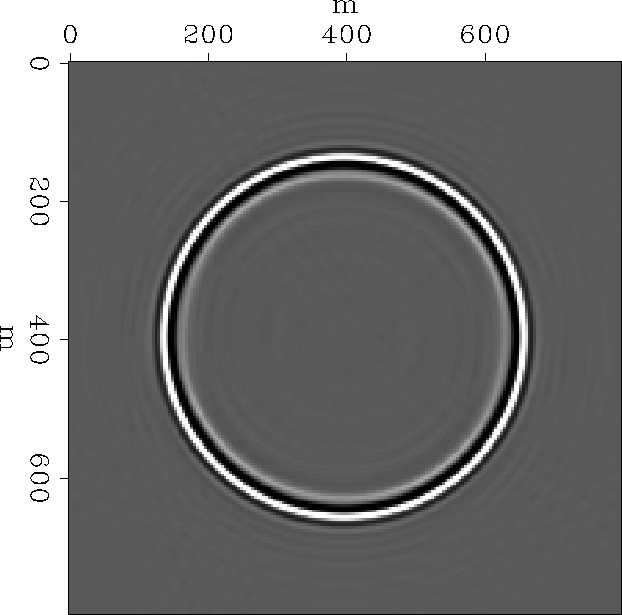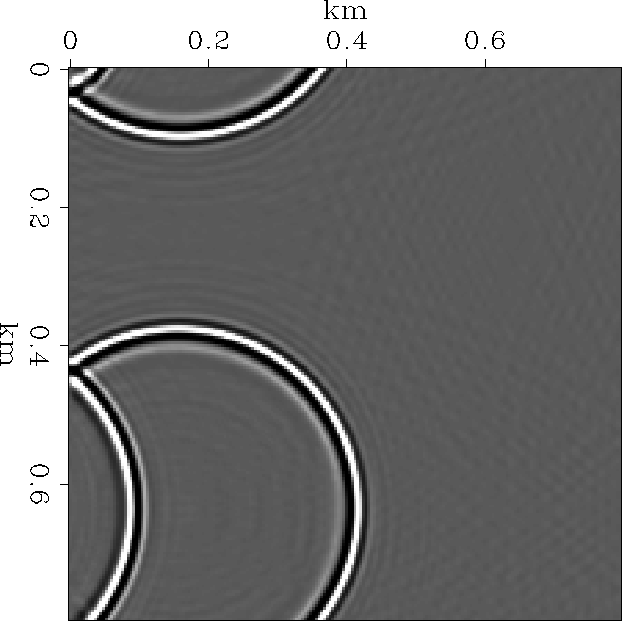Figure 3 shows the effects of the different boundary conditions on the two spatial axes. The fast spatial axis (top and bottom of Figure) have helical boundary conditions, and show wrap-around. The slow spatial axis (left and right of Figure) has a zero-value boundary condition, and hence is reflective.
For the examples in this paper, we set the `one-sixth'
parameter Claerbout (1985), ![]() , and used the isotropic
nine-point Laplacian from equation (8).
, and used the isotropic
nine-point Laplacian from equation (8).
|
3Dtimeslice
Figure 2 Depth-slice of centered impulse response corresponding to a dip of 45. Note the azimuthally isotropic nature of the full implicit migration. Evanescent energy has been removed by dip-filtering prior to migration. |  |
|
3Dboundary
Figure 3 Depth-slice of offset impulse response corresponding to a dip of 45. Note the helical boundary conditions on the fast spatial axis. |  |